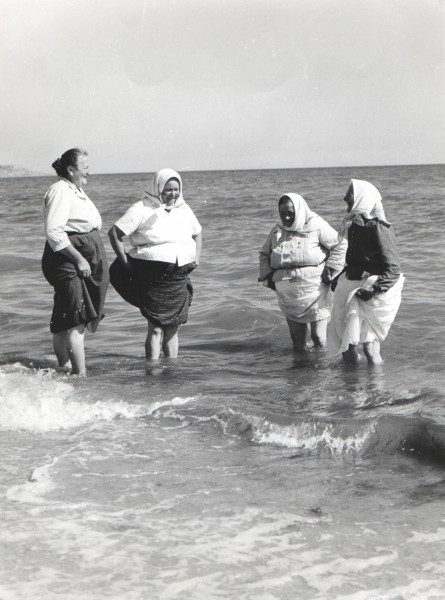Captivated by Beauty. The 1950s in Documentary Photography
November 8, 2013 – March 2, 2014
Esterházy Palace, 3rd floor
Curators: Aurel Hrabušický, Bohunka Koklesová
Similar to the exhibition Nové Slovensko / New Slovakia, we suggest that despite the ideological obstacles, documentary photography in this period achieved noteworthy results which far exceeded the achievements in the area of artistic photography. Moreover, the fields of alternative art and alternative photography did not exist in the 1950s in Slovakia. This exhibition, through its thematic segmentation, will actually present two views of life in Slovakia – the picture intermediated by official, propagandist photography, and the picture captured by photographers who succeeded in recording reality free of ideological prejudice.
The mutual relationship between official photographic interpretations of the epoch of building a socialist society (or in more daring visions, a communist society) and various “escape” strategies, attempts to search for thematic circles that were not significantly marked or affected by ideological indoctrination, are expanded through visual documentation. We are interested in the extent to which the principles of socialism were manifested in photography. The new wave of folklorism or ruralism was first and foremost among the escape strategies – it is in the 1950s when Karol Plicka returns to Slovakia and in essence concludes his past program of the “quiet celebration of Slovakia.”
Nevertheless, shots will appear here which can also be perceived as a parody of the doctrine of socialist realism and its officially required “awakening” themes – this will be shown by an only recently revealed part of the work of Karol Kállay and recently acquired photographs by Ladislav Csáder.
Rare images of the face of Slovakia hidden at that time, recordings of the life of suppressed, outlawed social groups (Kállay, unique shots by Viliam Malík), will continue in that vein.
Even during the continuous process of the building of socialism some pauses had to occur – photographers increasingly focused on lyrically digressive, civil aspects of life. In the second half of the 1950s, this led to the style of day-to-day poetry which temporarily brought together older artists (Anton Šmotlák, Ján Náhlik and several already mentioned photographers) with photographers of the emerging young generation (particularly, Ján Cifra, Miro Gregor, Juraj Šajmovič and Alexander Strelinger).
 Anton Šmotlák Cooperative Farmers at the Seaside1957
Anton Šmotlák Cooperative Farmers at the Seaside1957
Ladislav Csáder 1950 - 1960
Juraj Šajmovič 1952
Karol Kállay 1955 - 1960
